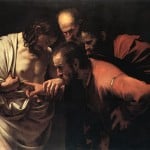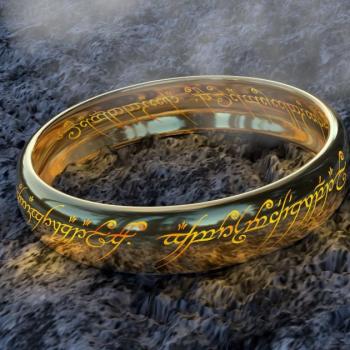Fifteen years ago, the naysayers ate their words. As the folks at TheOneRing.net document in an insightful little anthology, “The People’s Guide to J. R. R. Tolkien,” many had concluded prior to the release of Peter Jackson’s adaptation of “The Fellowship of the Ring” that the Oxford philologist’s high fantasy was incompatible with the screen. They were wrong. As wrong as Saruman was about a halfling’s chances of reaching Mount Doom.
 “The Fellowship of the Ring” soared to box office success and critical acclaim. Peter Jackson, Fran Walsh, Weta Workshops, Howard Shore, and a small nation of cast and crew opened up Tolkien’s masterpiece to the world in an unprecedented way. The novels on which Jackson’s films were based quickly moved from paperback fantasy and sci-fi sections to shelf-ends or kiosks in bookstores. The merchandising machine ground into action like the wheels of Isengard. And this 2001 blockbuster kicked off a trilogy of films that would culminate in record ticket sales worldwide and one of the biggest Oscar hauls in history.
“The Fellowship of the Ring” soared to box office success and critical acclaim. Peter Jackson, Fran Walsh, Weta Workshops, Howard Shore, and a small nation of cast and crew opened up Tolkien’s masterpiece to the world in an unprecedented way. The novels on which Jackson’s films were based quickly moved from paperback fantasy and sci-fi sections to shelf-ends or kiosks in bookstores. The merchandising machine ground into action like the wheels of Isengard. And this 2001 blockbuster kicked off a trilogy of films that would culminate in record ticket sales worldwide and one of the biggest Oscar hauls in history.
But of course, for true fans—especially those who shared Tolkien’s Christian faith—none of that was very important. Fifteen years ago, what really mattered was that the story they loved, the epic that shaped their lives, thought, and spirituality, had been discovered by millions for the first time. And for our culture, New Line Cinema’s interpretation of “The Fellowship of the Ring” became a guidepost of morality and meaning in a time when evil had reasserted itself in our world in a terrifying way.
Standing on the far side of Jackson’s widely derided “Hobbit” trilogy, it’s easy to forget what an achievement his three-part adaptation of “The Lord of the Rings” was. On production merits alone, “The Fellowship” was in a class by itself—a jaw-dropping display of talent and technology, followed by dozens of imitators that looked nowhere near as good. It pioneered the use of motion-capture CGI and prosthetics, as well as the technical and visual wizardry necessary to make grown men look hobbit-sized, and scale models look Minas-Tirith sized. The hordes of horribles were a makeup artist’s dream come true, and the decision to tap John Howe and Alan Lee for art and design meant the films conformed to an aesthetic canon these painters had been honing for decades. Audiences recognized The Shire, the Black Riders, Rivendell, and Orthanc when they saw them. And I could write a separate article praising Howard Shore’s monumental score.
“The Fellowship” and its successors told the essential story of Frodo, the One Ring, and the quest to save Middle-Earth from a fallen angel, with fidelity and deference to Tolkien’s work. Ultra-purist Bombadil devotees notwithstanding, it was a breathtaking movie. Along with its sequels, it drew us in with a sense of wonder and imminence of the supernatural that had gone missing from cinemas, or was at least relegated to the impersonal mysticism of “Star Wars” or “The Matrix.” “The Fellowship” really did change the landscape of filmmaking, and touched hearts in a way few products of the entertainment industry have in my lifetime. And it came not a moment too soon.
Tolkien hated allegory as a literary form, but he admitted that if his work could be described as allegory in any sense, it was an “allegory of power.” The central lesson of his saga is that even the smallest person can shape the course of history. Humility and mercy, not brute force, undo the power of evil. And the hope of fools wins out in the end. For a nation and a world reeling in the aftermath of September 11, it was just what the doctor ordered.
Not that a movie or even a peerless work of literature like “The Lord of the Rings” could heal the wounds inflicted by the terrorist attacks of that day, but they played the vital role that stories often play in binding up broken hearts and renewing spent courage. “The Fellowship” reasserted moral categories that had gone out of vogue, reminding us that cosmic evil really does exist, and more importantly, that cosmic good has the power to counter it, often in unexpected ways.
“I wish the Ring had never come to me,” says Frodo in a conversation taken almost verbatim from Tolkien’s novel. “I wish none of this had ever happened.”
“So do I. And so do all who live to see such times,” replies Gandalf, “but that is not for you to decide. All you have to decide is what to do with the time that is given to you. There are forces at work in this world besides the will of evil. Bilbo was meant to find the Ring, in which case you, also, were meant to have it. And that is an encouraging thought.”
The indestructible Ring of the Dark Lord Sauron may hold the power to bend history away from beauty and toward desolation. And even the mightiest kings, wizards, and elf-queens may not know how to unmake it. But as Christians hold the confidence of the Gospel in the face of wars and rumors of wars, the foolish hope and humility of Hobbits sustains Middle-Earth. While a Higher Power works salvation for Tolkien’s world through a halfling from the Shire, so God works salvation for ours through a Baby in a feeding trough. It’s a paradox dismissed by even more people than dismissed “The Lord of the Rings” as worthy of the screen. But in the end, it’s remarkable how wrong they all were.
Image: New Line Cinema












